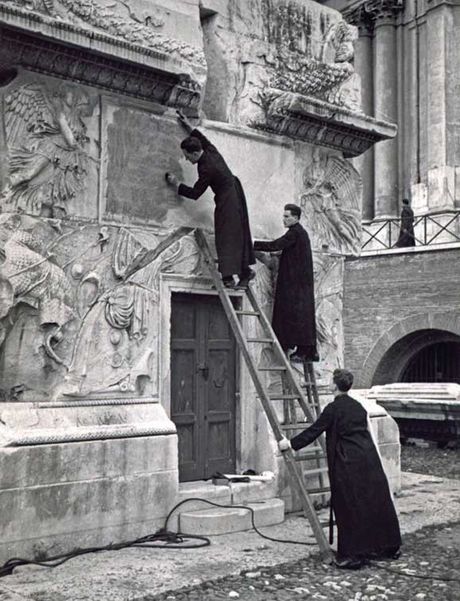
The title might suggest that this book follows the lines of John Summerson’s The Classical Language of Architecture (1964), but it certainly does not. Instead it discusses the ways in which this language is handled by architects of originality and individualism, who are not constrained by the “rules” that Summerson sets out. The Language of Architectural Classicism, the author declares, “may even ask if, in antique and post-antique times, there are any rules which may never be broken” while it “hopes to encourage everyone to look at classical buildings and see in them something which perhaps they had not noticed before”. It is a wonderfully idiosyncratic approach, and is guided by the principle set out in the subtitle.
Edward McParland is the doyen of architectural historians of Ireland. His chief publications have been a biography of the great 18th-century architect James Gandon (Zwemmer 1985) and Public Architecture in Ireland 1680-1760 (Yale 2001). He has spent his career teaching at Trinity College, Dublin.
He describes the broad ambition of his new book as “to meditate on the discipline of architectural classicism, on its rigour and flexibility, on its perfection and incompleteness … on its innovations and continuities, on the range of its expressiveness, from the camp to the sublime, and on its nature as a living system still offering scope today for imagination and invention beyond revivalism”.
The first chapter, “The Canon”, points out that “antiquity lacked a canon of Serlian rigour” (Sebastiano Serlio having established the “canon” in 1537), though it did have “conventions”. In a penetrating analysis of “Imitation”, McParland distinguishes it from plagiarism and pastiche. “Body and Building” is a fascinating account of the use of the human figure, most obviously as pillars called caryatids. “The Wall” considers the many ways of ornamenting walls, though it points out that an astylar wall (one without columns or pilasters) can be expressive.
The chapter “Discord” starts by quoting Gavin Stamp: “Great classical architecture acknowledges the transcendental importance of the continuous horizontal line.” However, McParland responds, “this chapter is more interested in artful discords than in continuities”. These often concern the corners of buildings, of which striking examples are illustrated, including Edwin Lutyens’s Britannic House (1924-27) in London’s Finsbury Square. There are also striking juxtapositions and complexities.
A perhaps unexpected chapter deals with the interesting topic of lettering on buildings. It opens with a photograph of the calligrapher Father Edward Catich (1906-79), author of The Origin of the Serif, on a ladder, in his cassock, taking a rubbing from the base of Trajan’s Column in the Roman Forum, whose superb lettering provided a popular model. The German architect Peter Behrens (1868-1940) regarded the form of letters as what gave “the most characteristic picture of a time and the best evidence of the state of a nation’s spiritual development”. The final chapter, “Architectural Backgrounds, mostly Quattrocento”, maintains that in that period “artists—comfortably crossing the boundaries of painting, sculpture and architecture—envisioned a new world, all’ antica, humanist
and Albertian”.
The conclusion sums up the book as being “as much a work of criticism—that is of looking, and hence of seeing—as of architectural history”. The author reminds us that he promised not to be “too solemn”, and that he had wondered if the one rule of classicism that could not be broken was that capitals must be at the top of the column. He then illustrates a design for a church doorway in Florence of 1755 in which Ionic capitals appear at the bottom of pilasters.
The numerous illustrations add force to the arguments: they are amazingly varied and range from ancient Roman buildings to the Disney headquarters in California, which has Snow White’s seven dwarves as caryatids, and a poster for a Pogues concert (one of many Irish references). The range reflects not just the author’s reading, but his travels—personal observation is obviously something he values highly.
This must be one of the most enjoyable and enlightening books on architecture ever written. McParland has an enviably broad knowledge of the subject, and writes entertainingly and readably.
- Edward McParland, The Language of Architectural Classicism: From Looking to Seeing, Lund Humphries, 288pp, 301 colour and b/w illustrations, £35 (hb), published 22 February
- Peter Howell’s latest book is The Triumphal Arch (Unicorn Publishing 2021)










